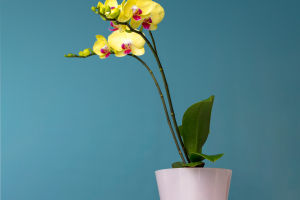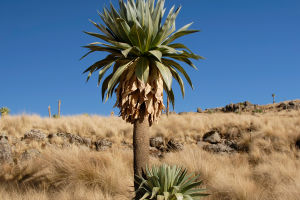Hey, Lykkers! Want to grow a lemon tree but don't have much space? No worries!
With a little love and care, you can grow a healthy lemon tree right in a pot on your balcony, patio, or even indoors.
Here's how you can successfully nurture your very own lemon tree and enjoy fresh lemons, no matter how small your space is!
Picking the Right Pot
The first step to growing a healthy lemon tree in a pot is choosing the right container. Lemons need plenty of room for their roots, so look for a pot that's at least 12 inches deep and wide. The pot must have drainage holes to avoid waterlogging the roots, which could lead to root rot. Terra-cotta pots are ideal because they breathe, keeping the soil well-aerated, but you can use plastic or ceramic too. Make sure to use a saucer underneath to catch excess water.
Selecting the Right Lemon Variety
Not all lemon trees are suitable for pots. Dwarf varieties, like the Meyer lemon, are perfect for container gardening because they stay small and manageable. Meyer lemons are especially great because they are more cold-tolerant and produce fruit with a sweeter taste than other lemon varieties.
Soil and Fertilizer
Lemon trees thrive in slightly acidic, well-draining soil. A mix designed for citrus trees or a blend of regular potting soil and sand works well. For added nutrition, mix in some organic compost. Since lemon trees in pots can't access nutrients as easily as those planted in the ground, fertilizing them regularly is key. Use a slow-release fertilizer specifically for citrus trees, applying it about once every three months.
Watering Your Lemon Tree
Lemon trees need consistent moisture but hate sitting in water. Water deeply once the top 1-2 inches of soil feel dry. During the warmer months, you might need to water more frequently, while in cooler weather, you can ease up. Make sure the water drains well, and empty any excess from the saucer under the pot to prevent root rot.
Sunlight Is Key
Lemon trees love sunlight and need at least 6-8 hours of direct sun each day to thrive. If you're growing your tree indoors, place it by a sunny window, ideally facing south. If your home doesn't get enough sunlight, consider using a grow light to give your tree the brightness it needs. In the summer, move your lemon tree outside to soak up some rays.
Pruning and Repotting
Regular pruning helps your lemon tree stay healthy and productive. Remove any dead or damaged branches, and thin out the center to allow light and air to reach the inside of the tree. Pruning also encourages new growth and more fruit! Every 2-3 years, you'll need to report your lemon tree into a larger container. Choose a pot that's about 2 inches wider in diameter and use fresh soil to keep the nutrients flowing.
Pollination and Fruit
When grown outdoors, lemon trees rely on bees and other pollinators. If your tree is indoors most of the time, you might need to lend a helping hand by using a small paintbrush to transfer pollen from flower to flower. Once your tree is properly pollinated, expect your first harvest of juicy lemons in about 6-9 months!
Common Challenges and How to Overcome Them
Growing a lemon tree in a pot comes with its challenges, but they're easy to tackle with the right care. Yellow leaves usually indicate that the tree is getting too much or too little water or is lacking in nutrients. Adjust your watering schedule and check your fertilization routine to fix this issue. If you notice pests like aphids or spider mites, a mixture of water and mild soap can help wash them away without damaging the tree.
Winter Care
Lemon trees don't like frost, so if you live in an area with cold winters, bring your tree indoors when the temperature drops below 50°F. Keep it in a warm, sunny spot away from drafts, and reduce watering since the tree will be less active during winter.
With a bit of attention and the right care, your potted lemon tree will reward you with fresh, fragrant fruit that you can enjoy year-round!
Take a shot at growing your little citrus oasis, and you'll soon be plucking lemons straight from your pot!


